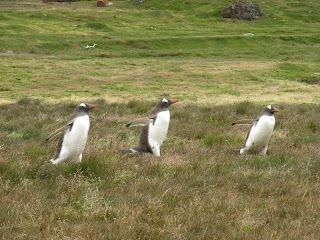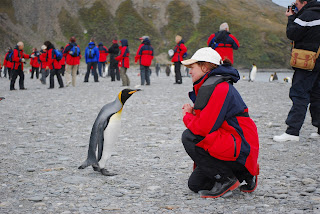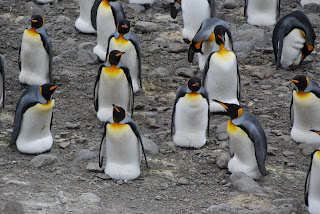It's been far too long since I have updated this site! Many chapters have been added to our lives however not documented here. The list includes East Africa, Mediterranean, Middle East, Southeast Asia, Peruvian Andes and Amazon, Norwegian Fjords and Scotland, Costa Rica to Panama through the Canal, Vietnam, Cambodia and Singapore to name a few!
Sunday, April 3, 2011
Saturday, June 20, 2009
And People TOO!
Finally, a few people photos to end this chapter...........because it's time to begin a new one! See here some of the places, situations and smiles of the trip. We had a great experience for sure - one that will be difficult to top! Having our good friends, Becky and Harry Senekjian with us made it even more fun. It remains so as we get together for dinner here and there to relive some of the more inspiring moments - and there were plenty!










I do wish everyone who reads this blog could have the opportunity to see and experience the magnificence of God's creation in this natural environment. Even if you never make it there, hopefully we have inspired you with a new reverence for the beauty and grandeur of our world as seen through our eyes in Antarctica.










I do wish everyone who reads this blog could have the opportunity to see and experience the magnificence of God's creation in this natural environment. Even if you never make it there, hopefully we have inspired you with a new reverence for the beauty and grandeur of our world as seen through our eyes in Antarctica.
Friday, June 19, 2009
A Sampling of Birds of the Southern Ocean

Accompanied by the mighty Albatross, we made our way through the Southern Ocean. Most impressive is the wing-span; some of these guys have a wing span of 11 feet! They rarely flap those big wings, instead riding the wind currents for miles and miles, soaring to create envy in our hearts at their freedom and beauty. They've been know to circumnavigate the earth with some living as long as 60 years. They are a monogamous family type - oh so cool! And their babies will vomit at you to protect themselves if they are fearful.



The Cormarant is a land based bird( second to last photo), also referred to as South Georgia Shag, that dives for it's food.


We also saw Giant Southern Petrels, Cape Petrels, South Polar Skuas as well as many others. We became fascinated by these winged creatures and have vowed to continue learning about birds in each of our travel locations.
Sunday, March 22, 2009
Creatures of the Sea







Penguins won our hearts! They are such amazing little creatures! Although defined as flightless birds adapted to life in cold seas, that doesn't begin to tell you of their amazing resilience and beauty in this relatively inhospitable environment. Their dense layer of waterproof feathers provides insulation by trapping air. They are also equipped with a layer of blubber. Each year in the spring, it is necessary to molt; this means "off with the old and on with the new" - feathers, that is - a necessity to maintain the waterproof aspect.
The first photo is of a Chinstrap Penguin at Monroe Bay in the South Orkney Islands.
I probably don't need to explain how they were named! Chinstraps prefer to nest on rocky, steep slopes and are more aggressive than Kings.
The second and third photos are Gentoo Penguins (recognized by the white patch over their eyes and the bright coral bill) strutting across a field at Grytviken, an abandoned whaling station on the Isle of South Georgia. (Visits to this location are allowed after six million pounds was spent to clean it of asbestos and other hazardous materials. Other abandoned whaling stations are closed to visitors within 200 meters.)
Photos 4 and 5 show Macaroni Penguins hopping to their nests high up on the cliffs - very different habit from the Kings who nest on the beach. Macaronis are distinguished by their bright yellow plumes growing in an arch across the center of the forehead. Where most penguins walk, Macaronis hop! It is said they can climb 200 M (656 feet) in 20 minutes.

Guidelines for our behavior in Antarctica are set out by IAATO (the International Association of Antarctic Touring Operators). Many are obvious , such as no littering or trampling vegetation, and although we were not allowed to approach within 15 feet of penguins, the penguins were unaware of the rules and were often curious about us, getting quite close to check out the "redcoat invaders".

A fluffy little chick (scientists refer to these guys as "Oakum Boys" ). The young of each of the species has it's own characteristics and habits.

King Penguins, endowed with vivid colors, were the most beautiful of the species we met.

Tete a tete! Paired birds dedicate themselves to the birth and nurturing of their young. Their musical, bugling cadence helps to locate their mates in the mass of birds on shore.


You have to love a guy that will hang around for the boring part..........and these little fellas definitely carry their share of the parenting burden! Hours after the female lays the egg, the male takes the egg from the female, carefully balancing it on his toes as he drapes his warm fold of vascularized abdominal skin over it, then settles back on his heels in a crouching, incubating position.
We are viewing nesting males here.
The female departs for the sea having entrusted her baby to her partner and returns weeks later, in time to hatch the egg and provide nourishment for the chick by regurgitating her food stores into the chick's mouth. The male, having carried out his part of this ballet while in starvation mode, departs for his share of krill and the open water.


500,000 King Penguins! A sight, sound and smell you can only comprehend after experiencing it!


A Weddell Seal basking in the sun!

The Leopard Seal is a lethal looking dude sometimes known to lie in wait for penguins as they swim to and from their colonies. A reputation for attacking humans probably stems from their inhibiting appearance - large head, wide gape and inquisitiveness - rather than human experience.



Steve called these 3 molting Southern Elephant Seals "The Enforcers"! They were lazy looking ladies but it was explained that the molting process is "catastrophic" and requires quite a metabolic investment. It is the largest seal in the world, with males weighing up to 3.5 tons and measuring 5 meters in length. They are capable of diving to 2000 meters to feed.
The Fur Seal Pups in the last three photos are distinguished by their ears. Not considered to be "true seals" which have no ears, they swim with their foreflippers. True seals swim with side-to-side movements of their hindflippers and crawl over land. Deceivingly cute as they scamper about the beaches, they are capable of bounding at considerable speeds over land and and can be quite aggressive.

Humpback whales became a regular feature of our expedition with sometimes as many as 20 surrounding the ship performing their water ballet. It was amazing how closely we could approach them. Watching them proved to be peacefully mesmerizing!



Sharing our photos is giving us a wonderful opportunity to relive this amazing experience. There is yet more to say, but for today......."arrivaderci"!

Monday, February 16, 2009
Penguins in Action!
You simply must watch, and listen, to this short video! The cacophony is my term for it! The sounds of 500,000 King Penguins - that would be 200,000 pair with chicks - is a sound like nothing you have ever heard before. It is, at once, thrilling and invasive!
The little brown guys are the chicks, and all the others are parents.
We gained an incredible respect for these hardy little guys. They survive and thrive in an environment in which we, as humans, could easily perish!
And Then There was ICE!
Known as the White Continent, icebergs present the first tangible sign that we've arrived. They take on various forms depending on where they originated and their life history. Flat topped, tabular bergs are typically from shelves. More irregular, castellated bergs are the product of active glacier fronts where calving is both frequent and dramatic.








 In the course of an iceberg's drift, it will melt, often to the point where it becomes top-heavy, unstable, then rolls exposing its underside, which will have the appearance of cut glass.
In the course of an iceberg's drift, it will melt, often to the point where it becomes top-heavy, unstable, then rolls exposing its underside, which will have the appearance of cut glass.
As the berg disintegrates and its size diminishes the ice takes on a new name. Masses of ice the size of a small house are known as bergy bits while those the size of a car are known as growlers. As growlers disintegrate they yield a myriad of much smaller pieces call brash ice.
Many factors influence how much of the berg is beneath the water, however it is usually somewhere between 70% to 90%.
One of the most striking aspects of bergs is the intense blue color they often have. Only when the ice crystals are perfectly formed and free of bubbles will icebergs take on this blue coloration and that is most often the case with old ice from deep within a glacier.
(Info presented here was excerpted from material shared by the Expedition Team on board Minerva.)








 In the course of an iceberg's drift, it will melt, often to the point where it becomes top-heavy, unstable, then rolls exposing its underside, which will have the appearance of cut glass.
In the course of an iceberg's drift, it will melt, often to the point where it becomes top-heavy, unstable, then rolls exposing its underside, which will have the appearance of cut glass.As the berg disintegrates and its size diminishes the ice takes on a new name. Masses of ice the size of a small house are known as bergy bits while those the size of a car are known as growlers. As growlers disintegrate they yield a myriad of much smaller pieces call brash ice.
Many factors influence how much of the berg is beneath the water, however it is usually somewhere between 70% to 90%.
One of the most striking aspects of bergs is the intense blue color they often have. Only when the ice crystals are perfectly formed and free of bubbles will icebergs take on this blue coloration and that is most often the case with old ice from deep within a glacier.
(Info presented here was excerpted from material shared by the Expedition Team on board Minerva.)
Subscribe to:
Posts (Atom)
